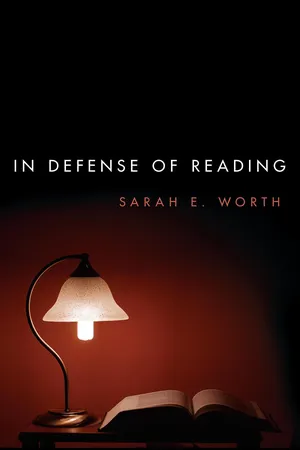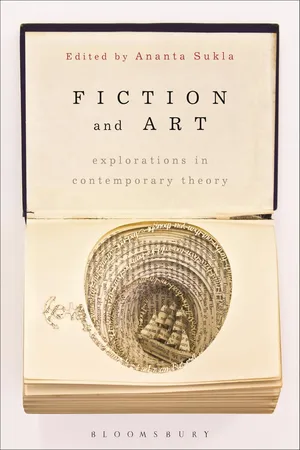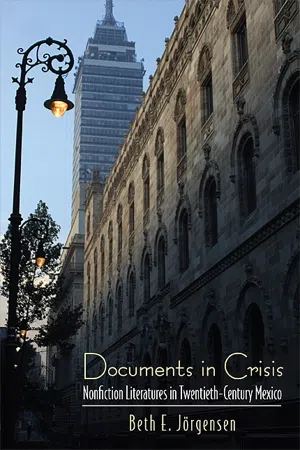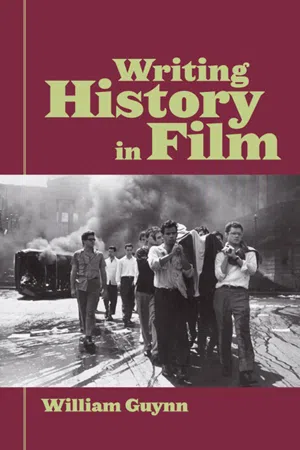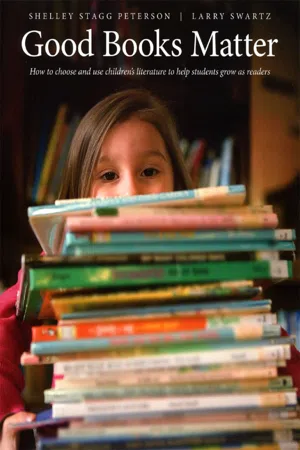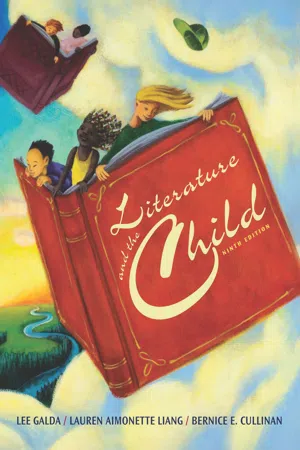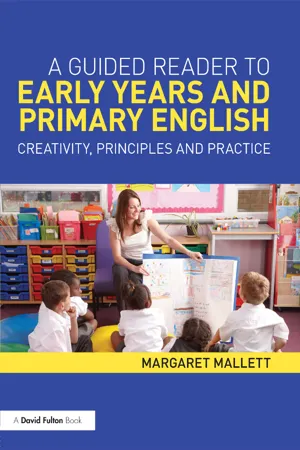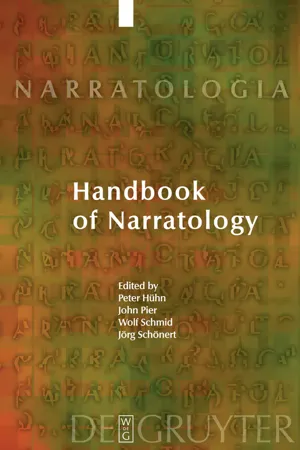Literature
Non-Fiction
Non-fiction refers to literature that presents factual information or real events, as opposed to fictional works. It encompasses a wide range of genres, including biographies, essays, memoirs, and journalistic pieces. Non-fiction aims to inform, educate, or persuade readers by presenting accurate and verifiable content.
Written by Perlego with AI-assistance
Related key terms
1 of 5
11 Key excerpts on "Non-Fiction"
- eBook - ePub
- Sarah E. Worth(Author)
- 2017(Publication Date)
- Rowman & Littlefield Publishers(Publisher)
Nonfictional narrative is riveted to reality in ways not only that are reasonable even if we never fact-check but also in ways that we can fact-check. It should be plausible or believable. It must aspire to be true, but not in the way that propositional statements can be true, since propositional statements rely primarily on their correspondence character. Facts are always true in context—in relationship to other facts and in relationship to time and place. Stories are true and stories are nonfictional in context, as well. Nonfiction must not just be “supposed that” or “imagined that” or even “believed that.” Nonfictional literature must “advance that” or “claim that” or “attest that” or say “it happened that.” Nonfictional literature must convince its readers that “it happened this way” and not some other way. Nonfictional literature makes arguments for its particular view of “what happened.” The author and the work must jointly testify that the story maps onto reality in ways that can be substantiated. This is no easy task for narration, since I take the narration itself to make stories opaque. But literary nonfiction is not just about retelling “what happened.” We have journalism and history for that. Nonfiction as a genre is relevantly literary. Martha Nussbaum has shown us how “with respect to any text carefully written and fully imagined, an organic connection [exists] between its form and its content.” 24 While she is primarily concerned with the style differences between philosophy and fiction, she rightly points out that different styles are often associated with different kinds of contents and that form and content cannot easily be separated. Thus, since fiction and nonfiction both adhere to generally the same literary style (they do not necessarily, but they share it at least more commonly than with philosophical prose, poetry, or history, presumably), the content might be relevantly similar. Perhaps this is accurate, but not necessarily - eBook - PDF
Fiction and Art
Explorations in Contemporary Theory
- Ananta Ch. Sukla(Author)
- 2015(Publication Date)
- Bloomsbury Academic(Publisher)
But narratives written about true events, events that really happened, are still largely The Fictional Truth: Nonfiction and Narration 173 constructed into stories by editing time, event, setting, tone, character and emotion and often constructing or inventing causation. Narratives are also always written from a particular perspective. Nonfiction does not and cannot include only true accounts of an omniscient narrator. Nonfictional literature is a genre of storytelling that includes true events, but it can also include much more as well, like emotionally laden perspectives that could never be derived from ‘facts alone’ or ‘true events’. Moreover, nonfiction includes a descriptive aspect that is necessarily inserted by a narrator. This perspective alone distances narrated stories from propositional sentences and propositional knowledge. The seeming difference between fiction and nonfiction is, most significantly, that one is false and the other is true or, likewise that I do not believe that what is fictional happened but I do believe that what is nonfictional happened. It seems reasonable to me that we should respond in emotionally appropriate ways to one and not the other, especially considering the fact that we do not tend to respond emotionally to things we know not to be the case. But the fact remains that as readers we respond emotionally to both fiction and nonfiction in consistent ways, and to understand both requires very similar cognitive mechanisms. That is, what it takes to understand the mechanics of a narrative, whether it be fiction or nonfiction, is largely the same – plot construction, character development, temporal and physical location, and causal sequencing to name a few. We use memory and imagination to make sense of narratives. The truth status and the reference status matters very little when it comes to the mechanics of narrative comprehension. - eBook - ePub
Documents in Crisis
Nonfiction Literatures in Twentieth-Century Mexico
- Beth E. Jörgensen(Author)
- 2011(Publication Date)
- SUNY Press(Publisher)
The Distinction of Fiction (1999), that she undertook to study the singularity of fictional narrative in part in response to a contemporary critical climate that has tended to disregard the distinctive differences between fiction and nonfiction, and to attribute fictionality to all types of discourse (vii). Deconstructive and postmodern theories and practices of literary writing are often said to blur the lines between genres and between fiction and nonfiction in the process of demonstrating how all verbal representations of the world are linguistic constructs. However, Cohn, like Phyllis Frus McCord to whom I referred in the introduction, refuses to accept that such blurring has made the problem disappear altogether. Cohn's work aims to show that fiction's unique claim on our attention lies in “its potential for crafting a self-enclosed universe ruled by formal patterns that are ruled out in all other orders of discourse” (vii). She develops her argument for limiting the category of fiction to nonreferential narrative by carrying out a systematic narratological comparison and contrast between various forms of history writing (biography, autobiography, historiography) and their fictional counterparts. In the present study, the focus is reversed to attend to the distinction of nonfiction by examining the interplay of conventions and expectations that inform the production and the reception of nonfictional narrative and that structure our perception of its particular relationship to material reality and human actions, past and present.The two Mexican writers quoted above are well-known for their contributions to literary nonfiction, in particular the chronicle and, in the case of Leñero, the documentary or nonfiction novel and documentary theater as well. Their reflections that I have excerpted articulate the fundamental connection between nonfiction writing and real world events and identifiable people, and they introduce a number of concepts and terms that arise in any discussion of nonfictional narrative: reality, real life, testimony, datum, fact, and document are part of the essential vocabulary with which to talk about the texts brought together in this book. This lexicon, which must also include other terms such as evidence, plausibility, factual status, and factual adequacy, requires a rigorous interrogation and theorization that goes well beyond the limits of commonsense usage. In this chapter I have assembled critical resources provided by studies in history and literary and genre theory in order to formulate functional definitions for a core vocabulary, without negating the persistent ambiguities inherent in each concept.Three distinct and competing conditions for writing and reading nonfiction inform my study, which acknowledges and seeks to explain the tensions at play among them. First, contemporary Western theories of language and representation posit the constructed, conventional nature of the discourses of both fact and fiction, and therefore destabilize the boundaries between them. Post-structuralist theorists working in many fields have challenged positivistic and humanistic assumptions about the status of the real and its linguistic referent in recognition of the irreducible role of language as constitutive and not merely reflective or expressive of human perception, memory, and communication. The contemporary interrogation of language and the overturning of the view of language as a transparent medium of representation have as one consequence an unveiling of the presumed, but false “naturalness” of certain commonsense notions that once anchored the study of literature. Roland Barthes's essay “From Work to Text,” his book S/Z, and Michel Foucault's “What Is an Author?” are examples of seminal work that contributed to exposing the discourse-determined, historically situated nature of cultural phenomena such as the literary work, realism, and authorship. With regard specifically to writing that proposes to document the past, the most radical assertion of the materiality and the power of discourse, with a corresponding negation of the notion of a ready-made reality that precedes it, is found in Foucault's histories, such as those treating sexuality, prisons, and madness. In his books, the view of events understood as “what actually happened”1 - eBook - ePub
- William Guynn(Author)
- 2013(Publication Date)
- Routledge(Publisher)
2SIGNIFYING HISTORYWhat Are Factual Narratives?It is, I believe, evident that a discussion of fiction and nonfiction in film cannot be separated from the theoretical debates on the question in literature, linguistics, and philosophy, which have their historic roots in antiquity and have developed significantly in the course of the last century. Indeed, the most probing work on nonfiction film in recent years relies on theoretical perspectives that come from outside film studies. Even if nonfiction in film manifests itself in specific ways, particularly because film is an audiovisual, not a literary, discourse, the larger theoretical issues are the same. A review of the critical literature is particularly relevant to examining the nonfictional character of the historical film because historians and film historians have long hesitated to give it that status. Moreover, we are, I believe, at a critical juncture: the beginning of a reexamination of traditional notions of genre that have long held back the serious study of works of nonfiction. I begin the discussion with literary theorist Gérard Genette, who has been instrumental in stirring up debate on the question.In 1991, Genette’s Fiction et diction launched an appeal for the study of nonfictional genres so long neglected by literary theory. In this work, Genette makes the case that the discipline of narratology has been able to ignore factual narratives by restricting its field of investigation to the “literary,” that is, the fictional genres, whether theatrical or novelistic. In so doing, it has effectively excluded from analysis the rich domain of nonfictional genres, on the basis of a difference of function. Nonfictional works are pragmatic, rather than aesthetic; they act on the reader/spectator with the intent to modify in some way his relationship to the world. The distinction goes back to Aristotle, who established the boundaries of the literary by his notions of légein and poèsis. As Genette argues, “Everything takes place therefore as if Aristotle had established a divide between two functions of language: its ordinary function (légein) to inform, interrogate, persuade, order, promise, etc., and its artistic function, which is to produce works (poiein). The first belongs to rhetoric—today we would say, rather, pragmatics—the second to poetics.”1 Moreover, poèsis, which designates production of works, is tied to the creative act of mimèsis, that is, the “simulation of imaginary actions and events.”2 - eBook - PDF
- H. Porter Abbott(Author)
- 2020(Publication Date)
- Cambridge University Press(Publisher)
Nineteenth-century detective fiction, the classical epic, 1950s apocalyptic science fiction, eighteenth-century epistolary novels, Jacobean revenge tragedy, romance novels, film noir, and all other genres are each freighted with subcultural ideas on subjects like gender, what is knowable, the chance of happiness, freedom of choice, the existence or nonexistence of God. In short, narrative fiction spends more time confirming our illusions than opening us up to new knowledge. Even realistic fiction, so-called, has no necessary leverage on the truth. Roland Barthes coined the phrase “reality effect” [ l’effet de réel] for the impact of details that have no other function than to convince us that the narrative is true to life. Reality, in other words, is itself an effect that we subliminally decode. 15 The truth of fiction is always a construction through which we make sense of the world and, in this regard, all such truths are equal. At least, so the argument goes. Which leads to the second theme – that the truth that readers and critics find in nonfiction may necessarily be fictional. This idea has received much attention in the last three decades. Nonfiction may not have the flexibility and narrative resources of fiction, but this has not prevented historians from selecting for their narratives certain details rather than others, coming back to some of them for emphasis, orchestrating stretches of suspense and moments of disclosure, developing perspective through focalization and voice – in short, deploying what can only be called narrative technique to nurse a story out of storyless reality. The historian Hayden White, whom we cited in a similar context in the last chapter, used the term emplotment to describe this process of turning a mere chronicle of events, coming one after another, into a story with a beginning, middle, and end, guided by deep structures of genre and story (e.g., masterplots ) with all their potential freight of thought and feeling. - eBook - PDF
Good Books Matter
The background information teachers need to find, choose, and use children`s literature to help their students grow as readers
- Larry Swartz, Shelley Stagg Peterson(Authors)
- 2011(Publication Date)
- Pembroke(Publisher)
CHA P T ER 7 Nonf i ct i on Nonfiction is not just about information. The truth is that for many young adult readers nonfiction serves the same purposes as fiction does for other readers: it entertains, provides escape, sparks the imagination, and indulges curiosity There’s a lot more to a good nonfiction book than mere information. (Sullivan, 2001: 44) Through reading informational literature, children learn more about the famil- iar and are introduced to people, places, and things they might never encounter in everyday life. In addition, as Russell Freedman (1992: 3), award-winning writer of nonfiction for children, explains, “[a]n effective Non-Fiction book must animate its subject, infuse it with life. It must create a vivid and believable world that the reader will enter willingly and leave only with reluctance.” A well- crafted nonfiction book captures and holds children’s attention as readily as any well-written fictional narrative would do. According to Bamford and Kristo (2003), nonfiction literature takes a wide range of forms: • Concept books, which explore a class of objects (e.g., John Paul Zronik’s Oil and Gas) or an abstract idea (e.g., Shari Graydon’s Made You Look: How Advertising Works and Why You Should Know) • Biographies (e.g, Elizabeth MacLeod’s Albert Einstein: A Life of Genius) • Photographic essays (e.g., Kathy Conlon’s Under the Ice: A Marine Biologist at Work) • Survey books (e.g., Silvey’s The Kids’ Book of Aboriginal Peoples in Canada) • How-to books (e.g., Judy Ann Sadler, Gwen Blakley Kinsler, Jackie Young, and Biz Storms’ The Jumbo Book of Needlecrafts) • Reference books (e.g., Stanford’s The Canadian Oxford Junior Atlas) Increasingly, information books defy classification, however, because they take on hybrid forms, sometimes even interweaving fiction and nonfiction. - eBook - PDF
- Lee Galda, , Lauren Liang, Bernice Cullinan, Lee Galda, Lauren Liang, Bernice Cullinan(Authors)
- 2016(Publication Date)
- Cengage Learning EMEA(Publisher)
In fiction, the story is uppermost, with facts sometimes used to support it. The key lies in the emphasis of the writer, which in nonfic-tion should be on the facts and concepts being pre-sented. It is these that must be truthful, verifiable, and understandable. Nonfiction for children today is abundant, par-ticularly nonfiction picturebooks. There has been an enormous increase in both the number of Non-Fiction trade books published for children and the breadth of topics covered. Writers select topics that interest children, and many of the topics they select fit nicely into an existing school curriculum. In the last ten years, a push for including more nonfiction reading across the curriculum has led to increasing work with nonfiction in English and language arts as well as in content area classrooms. It also has drawn attention to the various types of nonfiction, from argumentative prose to literary nonfiction, and the importance of exposing children to all types. Regardless of particular type, nonfiction books today invite readers with spacious, well-designed pages and intriguing illustrations that enhance and extend the reader’s understanding of the topic. The texts often present writing at its best: interesting lan-guage used in varied ways. Metaphor and descriptive language allow readers to link what they are reading about with what they already know. The structure of nonfiction varies widely. Some books use fictional devices to interest young readers in the topic at hand, introducing fantastical characters such as the zany Mrs. Frizzle and her students in Joanna Cole’s Magic School Bus (P–I) series or the snarky chick-ens in Lila Prap’s Dinosaurs?! (P–I). Others use a narrative frame to impart information or create parallel texts with a fictional story matching factual information. There are many other structures that clever writers use to support their goal—to impart information to their readers. - eBook - ePub
A Guided Reader to Early Years and Primary English
Creativity, principles and practice
- Margaret Mallett(Author)
- 2015(Publication Date)
- Routledge(Publisher)
CHAPTER7Non-Fiction literature in English lessonsIntroductionEnglish lessons are the special home of fiction and this is reflected in the length and depth of analysis of a range of genres in Chapter 6 . However, some kinds of Non-Fiction have an important place in the English curriculum and have, perhaps, not always received the attention they deserve. And yet the best writing of this kind has qualities which help develop critical literacy and accelerate children’s progress in reading and writing. What are the genres of Non-Fiction of value in English lessons? I include here autobiography and biography, ‘lyrical’ texts and those texts in print or on-screen which set out arguments to inform and nourish the debates that are a feature of lively English lessons.The extracts in Section 1 are concerned with diaries, autobiography and biography. Extract 53 takes up a broad canvass and confirms the place of literary kinds of Non-Fiction including diaries, letters, autobiography and biography – in the English programme. Extract 54 sets out Sue Unstead’s review of Michael Rosen’s biography of Roald Dahl and indicates what she values in his innovative approach to informing and involving his young readers about a gifted writer and sometimes eccentric human being.In Section 2, Extract 55, from Mallett’s Bookmark publication on the lyrical voice in Non-Fiction, attention turns to a poetic Non-Fiction text which describes the life cycle of the eel in such a way that text and pictures combine to draw upon and develop the imagination and feelings as well thinking and understanding. Calling such creations ‘information picturebooks’ hardly does them justice; children who have shared this book with me have commented that it is a ‘sort of poem in words and pictures’.Section 3 turns to some of the texts that support and inspire that part of an English programme which allows children to reflect on all the many issues that concern human beings as they live their lives. Extract 56, from an article by Rob Sanderson and Jo Bowers, considers the variety of magazines, print and online, available for children in the four to eleven age range and their potential for encouraging thinking and debate. - eBook - PDF
- S. Keen(Author)
- 2003(Publication Date)
- Palgrave Macmillan(Publisher)
Between fraud or forgery and out-and-out fiction lies another curious case, that of the satire mistaken for the real thing. Literary history provides enough examples of fictions with satirical intention being read straight (sometimes with dire consequences for their authors) to raise substantive questions about the formal mechanisms that supposedly distinguish fiction from nonfiction. If a reader cannot tell the difference, then where does the difference lie? Indeed, the expectations brought by the reader to the text have a powerful role in its reception as fiction, nonfiction, or a work in a particular subgenre. Terms Ordinarily, the package in which we receive narrative fiction prevents our confusion: we see the label ‘FICTION’ on the back cover of The Autobiography of Miss Jane Pittman; perhaps we have heard of Ernest Gaines already (we are more likely to have that knowledge than the readers who were confused in 1971). We know that the text that masquerades as ‘real’ is just that, a fiction in disguise. What Lennard Davis calls its ‘presentational context,’ making up the ‘pre-structure’ an informed reader brings to the task of inter- pretation helps to identify and place the text before we even begin reading it (Factual Fictions, 12). The elaborate set of conventions publishers employ in presenting texts, including fictional narratives, has received extensive witty commentary from Gérard Genette in his book Paratexts (1987). As the French title (seuils) suggests, Genette is interested in the liminal or threshold qualities Fiction in the Form of Nonfiction Texts 129 of the conventions that mediate among author, reader, book, and pub- lisher. These paratexts, as Genette names them, include items that appear both within and outside the physical book. Paratexts are of two kinds, the peritexts, which appear within or on the book itself, and the epitexts, which exist entirely outside the physical book. - eBook - PDF
- Peter Hühn, John Pier, Wolf Schmid, Jörg Schönert, Peter Hühn, John Pier, Wolf Schmid, Jörg Schönert(Authors)
- 2009(Publication Date)
- De Gruyter(Publisher)
Indeed, fiction, and its species narrative fiction, are best understood as a specific way of producing and using mental representations and semiotic devices, be they verbal or not. This means that narrative and fiction are intersecting categories and must be studied as such (see Martínez & Scheffel 2003). 2.3 Types of Fiction The difficulty of getting a clear picture of the distinction between fac-tual and fictional narrative results in part from a long history of shifting uses of the term “fiction.” The sense which is most current today—that of a representation portraying an imaginary/invented universe or world —is not its original nor its historically most prominent domain of refer-ence. In Latin, fictio had at least two different meanings: on the one hand, it referred to the act of modeling something, of giving it a form (as in the art of the sculptor); on the other hand, it designated acts of pretending, supposing, or hypothesizing. Interestingly, the second sense of the Latin term fictio did not put emphasis on the playful dimension of the act of pretending. On the contrary, during most of its long his-tory, “fiction,” stemming from the second sense of the Latin meaning, was used in reference to serious ways of pretending, postulating, or hy-100 Fictional vs. Factual Narration pothesizing. Hence the term has usually been linked to questions of ex-istence and non-existence, true and false belief, error and lie. In classical philosophy, “fiction” was often used to designate what we today would call a cognitive illusion (→ illusion). Hume used the term in this sense when he spoke about causality or about a unified self, calling them “fictions” (Hume [1739] 1992: Bk I, Pt IV, Sec VI). Now, this type of fiction, as Hume himself explicitly stated, is quite different from fiction in the artistic field. It is part of the definition of a cognitive fiction that it is not experienced as a fiction. A narrative fic-tion, by contrast, is experienced as a fiction. - eBook - PDF
Reality and Truth in Literature
From Ancient to Modern European Literary and Critical Discourse
- Irena Avsenik Nabergoj(Author)
- 2013(Publication Date)
- V&R Unipress(Publisher)
4. Reality and Fiction in Biography and Autobiography Biographical and autobiographical literature has a double foundation. Many of these literary works arise on the basis of first-hand experience of personal contact with others and personal experiences of events. The second type of biographical literature is based on the study of sources. A crucial difference between history and biography, including autobiography, is that whereas history aims at general statements about a period, individuals and the events with which it deals, biography focuses on individuals and perceives them with utter spe- cificity, often dealing in details from a person’s life. In all literary types and genres that emerge from general or personal history, questions of truth, prob- ability and the significance for the personal life and that of the society are important. The question of truth or probability in biographical or autobio- graphical writing encompasses the question of the relation between objective and subjective truth and the question of the aims of biographical or autobio- graphical writing. Biographical and autobiographical writing is a tapestry woven of historical testimony and literary creativity. Because in autobiography the narrating subject and narrated object are one and the same, the possible period of events related are limited to the lifespan of the author. Thus, the tension between the presentation of objective reality and subjective creativity in auto- biography is more explicit than in traditional forms of literature. This chapter deals primarily with the characteristics of autobiographical writing and examines the problem of truth in certain classic biographical and autobiographical works from antiquity to the present.
Index pages curate the most relevant extracts from our library of academic textbooks. They’ve been created using an in-house natural language model (NLM), each adding context and meaning to key research topics.
